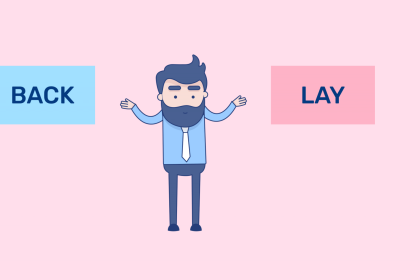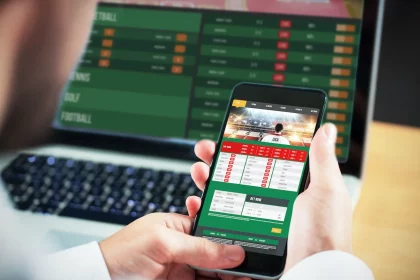Parlays are revered in the history of sports betting. There are numerous tales of wild parlays winning big money against all odds. Hell, the climaxes of the widely praised recent films “Uncut Gems” and “Silver Linings Playbook” both center on risky parlay wagers.
What is a parlay then? How do parlays operate? Do you want to play parlays?
In this section, we’ll go through everything parlay-related, including the solutions to these and other topics.
PURPOSES OF A PARLAY BET
Parlays are known by many names in different parts of the world. They may also be known as “accumulators” or “multis,” depending on the sportsbook or the area.
Whatever the name, the idea is rather straightforward. A parlay bet combines several bets into a single stake. Rolling over the earnings from each wager into the subsequent leg of the wager accomplishes this. To qualify as a winner, a parlay must have a winning “leg,” or individual wager.
Consider the Super Bowl between the Tampa Bay Buccaneers and Kansas City Chiefs from the previous year. Pro Football Reference reports that the Chiefs finished with a -3 point spread handicap with a combined betting total of 54.5 for the two teams.
Imagine that a gambler decided to risk $100 by betting on the spread and the total. They could just wager $50 on the Bucs +3, followed by another $50 on the under 54.5. Assuming a -110 price on both bets, our hero makes $90.90 if both wagers are successful.
Or, if the bettor so desired, he or she might combine both bets into a $100 parlay. The wagers are now intertwined; for the wager to win, both sides must triumph. This time, the bettor wins $264 when the Buccaneers win 31-9 and hoist the Lombardi Trophy.
That’s a big change, no? However, think twice before loading the cannon to discharge the money.
WHAT IS THE PAYOUT FOR A PARLAY BET?
Once more, the sportsbook sets up a multi-level wager when it accepts the parlay bet, such that each winning wager increases the stake on the subsequent leg.
The first wager in the previously mentioned example with two standard -110 legs is $100 on the Bucs +3 or the under 54.5. It doesn’t matter whether bet represents the “first” leg in this situation because both bets complete at the same time. That $100 becomes $190.91 because the Bucs +3 covered the spread.
That $190.91 is now the stake for the subsequent leg, which is beneath 54.5. That also came in, and a bet at -110 on the price pays out $173.55. You gain $364.46 when you add these up.
Since the bettor’s initial wager was $100, the profit on this parlay bet would be $264.46.
There is a straightforward structure for -110 bets if you’re wanting to conduct some back of the envelope arithmetic to determine what a parlay bet will pay out. As we just saw, a two-teamer pays out roughly 2.6 to 1. The odds essentially double from there for every -110 wager added to the parlay, with a three-teamer paying about 6-to-1.
Let’s examine a few potential wagers from Week 1 of the NFL season to see how parlays would function in certain situations. The lines that are to come are all from DraftKings Sportsbook. We’ll examine a three-team parlay first, followed by a four-team parlay since we’ve already dissected a two-team parlay.
CONTRADICTIONS WITH PARLAY BETTING
The majority of sources will advise against placing sports parlays, at least in terms of long-term predicted value. This is due to the fact that all or almost all of the wagers in a parlay must have positive expected values in order for the parlay to have a positive expected value (+EV).
Most parlays merely make it simpler for the bookmaker to win the bettors’ money because this is a very difficult bar to clear. Check any legal betting market’s revenue breakdown for evidence. By a significant margin, sportsbooks routinely keep a bigger part of the wagering revenue from parlays.
If that still isn’t enough to persuade you, you can easily see it by comparing the expected value of the $100 parlay to the expected value of two $50 spread bets, both at odds of -110. We’ll do the math for you, but it goes like this assuming that each wager has a 50% chance of winning:
- Parlay: -9 $
- Straight wagers: $4.55 down
Parlays should work if you want to provide the sportsbooks money at a rate that is twice as fast or faster.
THE CONTRARY TO PARLAYS
Now, parlays are not the source of all evil, despite what the content in the sports betting industry tells you overwhelmingly. Parlays can be wagered on for a variety of reasons.
People prefer placing little wagers that have a chance of winning big, first and foremost. The lottery’s appeal is based on the same reasoning.
Many bettors merely don’t give a damn if they are making a -EV wager. They don’t necessarily wager with the intention of making money over the long run, and that’s fine. They enjoy themselves by spending their extra money on a six-teamer that has little chance of returning home. Parlay away if they’re playing responsibly and you like parlays.
Second, there are unquestionably +EV parlays. We’ve already discussed combining winning bets to improve the payoff possibility. However, via the use of a theory known as correlation, even breakeven or -EV gamblers can occasionally discover successful parlay bets.
LINKED PARLAY BETS
What if you could combine two wagers, but the probability of winning the first wager increased if you won the second? It seems that you can. “Correlated parlays” are the name given to these parlays.
The most straightforward illustration would be combining the game’s total over with the first-half over. It is quite clear that the overall total has become the favorite to win if the first-half total is accurate.
Sportsbooks have safeguards in place to prevent you from placing bets on certain parlays because it is so obviously the case. They used to, at least. “Same-game parlays” (SGPs) have recently taken the sports betting world by storm. But beware—you must first check the payouts on these before placing your bets to determine how they stack up against the payouts on your individual bets. Sportsbooks frequently manipulate payouts to match the correlation, which negates their positive expected value (+EV) potential.
Anyhow, some connected parlays are accepted and pay out completely. In Week 6 of the 2021 NFL season, there is a perfect opportunity for an illustration. The Kansas City Chiefs depart for Washington to meet up with the football team.
If all goes according to plan, Kansas City will have a very powerful offensive and Washington will have a very formidable defense. It’s highly unlikely that Washington can stay in front if the game ends in a high-scoring shootout. Washington, though, has a much greater chance of covering the spread or winning if the game ends up being low-scoring, most likely going under the total.
If you accept this premise, then Washington and the under are theoretically connected bets. So, if you’re right, include them both in a parlay bet offers a +EV.
PLAYING CARDS
Nowadays, using a Parlay Card to wager on parlays in casinos seems to be more common. These are the lengthy, slender cards that gamblers fill out by marking the numbered circle next to the side or point spread that they choose to wager on. The bettor just hands the completed half of the card to the ticket writer in the sportsbook along with the amount they wish to wager once the teams and totals have been selected.
Football season is a good time for parlay cards. Parlay cards come in a wide range of varieties, including varied teasers, ties win, and reverse teaser cards known as pleasers. Due to their increasing popularity, mobile sports betting applications have begun to include Parlay Cards for users.





